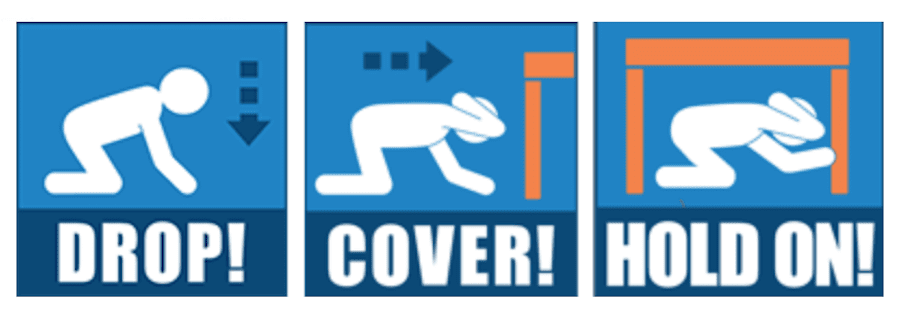The American Red Cross Los Angeles Region recommends that everyone participate in the Great ShakeOut earthquake drill on Oct. 20 and join millions of people around the world to practice what to do during an earthquake.
Earthquakes strike suddenly, without warning and can occur at any time of the year, both day and night. They can happen anywhere, where you live, work, at school or even on vacation.
Los Angeles shakes, rattles and rolls from an average of five earthquakes with magnitudes between three and four annually, you might have already felt a few this year, with the Big One predicted to strike at any time.
The U.S. Geological Survey says there is a 31% likelihood of a magnitude 7.5 earthquake to strike Los Angeles in the next couple of decades.
While we can’t stop earthquakes, we should be prepared and this Oct. 20 at 10:20 a.m. is your chance to practice what you know. Be a part of the Great ShakeOut, then share a photo of yourself doing your best “drop, cover and hold on.” Use the hashtag #ShakeOut and tag @RedCrossLA for a chance to be featured on our social media. Visit shakeout.org to learn more about what you, your family or coworkers can do to be safe when an earthquake hits.
Earthquake Safety During an earthquake, do not try to move around. Drop, cover and hold on. Try to protect your head and torso. If you are sitting at a desk or table, get under it. Otherwise drop wherever you are.
-If you are in bed, stay there, curl up and hold on. Protect your head with a pillow.
-If you are inside, stay indoors until the shaking stops and you are sure it is safe to exit. When it is, use stairs rather than the elevator in case there are aftershocks, power outages or other damage.
-If you are outside, find a clear spot (away from buildings, power lines, trees, streetlights) and drop to the ground. Stay there until the shaking stops.
-If you are in a vehicle, pull over to a clear location and stop. Avoid bridges, overpasses and power lines if possible. Stay inside with your seatbelt fastened until the shaking stops. Then, drive carefully, avoiding bridges and ramps that may have been damaged.
-If you are in a mountainous area or near unstable slopes or cliffs, be alert for falling rocks and other debris. Landslides are often triggered by earthquakes.
Download the free Red Cross Emergency app for tips on what to do before, during and after earthquakes and other disasters. Get trained in first aid and CPR/AED skills and download the Red Cross First Aid app, so you’ll know what to do if emergency help is delayed.
Like this:
Like Loading...
Related





 Tweet This
Tweet This Facebook
Facebook Digg This
Digg This Bookmark
Bookmark Stumble
Stumble RSS
RSS


























REAL NAMES ONLY: All posters must use their real individual or business name. This applies equally to Twitter account holders who use a nickname.
0 Comments
You can be the first one to leave a comment.